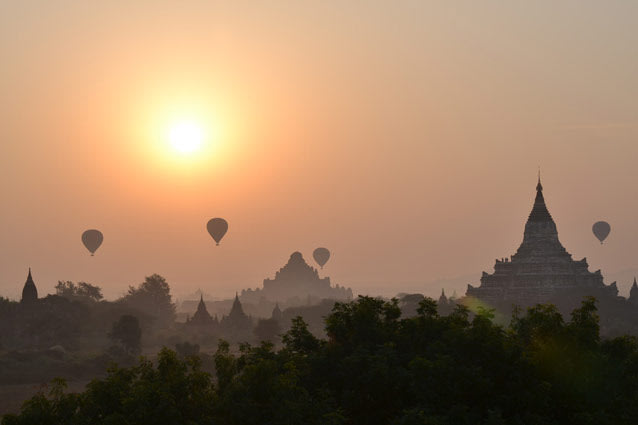
Behind the temple ruins of this ancient Myanmar city, lie tales of drama and inspiration
Over 2,200 Buddhist ruins vie for attention in the fields of Myanmar’s ancient city of Bagan. Each seems to whisper secrets of its past, never revealing the full story. With scattered records and few definite answers, Bagan remains somewhat a mystery to historians and visitors alike. Out of this mystery emerges legends and folklore. Take for instance the Dhammayangyi Temple, the largest remaining temple in Bagan. It echoes a gruesome past. King Narathu built the temple to repent for murdering his father, brother and a wife. The legend is that Narathu's wickedness was so perpetual that he chopped off the hands of temple masons for faulty workmanship. Then there is Ananda Pahto, one of the largest and best preserved temples in Bagan. The story goes that King Kyanzittha was so inspired by the tale of eight monks meditating in the Himalayas that he built the temple to emulate the scale and coolness of the mountains. To this day, Ananda Pahto dominates the temple fields of Bagan. In 2011, The Archeological Survey of India pledged money to renovate and restore the Ananda Pahto. These legends are about just two of Bagan's myriad temples that lie densely packed along the banks of Myanmar's Irrawaddy River.
For more than 200 years leading to 1287, Burmese kings commissioned over 4,000 Buddhisttemples around Bagan – a building fest triggered by the region’s shift from Hinduism and Mahayana Buddhism to Theravada Buddhism. At its peak, Bagan was a vibrant religious and cultural center. The exact cause of Bagan’s decline is contested, but a combination of invasions and natural disasters (most recently a 6.5 Richter scale earthquake in 1975) compromised original structures and drastically reduced the population. Despite the physical damage, Bagan still holds the world's most concentrated area of Buddhist religious structures. In 1990, in an effort to convert the area to an archeological zone and tourist destination, the government relocated all remaining inhabitants of Bagan to New Bagan. However, Bagan continues to woo visitors with ruins yearning to share tales of the past.
Most of Bagan’s temple grounds are quiet and open for exploration. There are minimal barriers between visitors and the ancient ruins, particularly at the less visited temples. A handful of temples draw tour groups. The others are either completed deserted or guarded by a watchman who, if befriended, is happy to unlock the gates for a private tour. Those visitors who brave the dark staircases and are willing to wander through narrow passageways are often rewarded with intimate places to view the plains. Bagan seems to take on different personalities throughout the day. As the sun ascends, it reveals layers upon layers of temples, beginning in a pink hue at dawn and glowing red in the mid-day heat. Dusk casts a golden spell on the brick ruins.
Unlike ancient sites that have long been explored, Bagan is relatively new to mass tourism and it is still possible to visit the temples of Bagan at a leisurely pace. For a bird’s eye view of the region, go on a sunrise hot air balloon ride.
No comments:
Post a Comment